Intel Performance Maximizer (IPM) Tested: One-Click Overclocking Comes to 9th-Gen CPUs
VRMark, 3DMark and AotS: Escalation
Test Notes
We tested with the Core i9-9900K in several configurations, as listed in the performance charts. The "MCE @ 5.0" entry reflects our Multi-Core Enhancement configuration that uses the motherboard's predetermined voltage and frequency profile to overclock all cores to the maximum Turbo Boost bin (5.0 GHz). The "IPM 5.0" entry denotes the Intel Performance Maximizer's auto-overclocked 5.0 GHz setting paired with a powerful custom watercooling setup. Meanwhile, the "@ 5.0" entry contains our manually tuned all-core 5.0 GHz overclocking results.
VRMark, 3DMark
We aren't big fans of using synthetic benchmarks to measure performance, but 3DMark's DX11 and DX12 CPU tests provide useful insight into the amount of horsepower available to game engines.
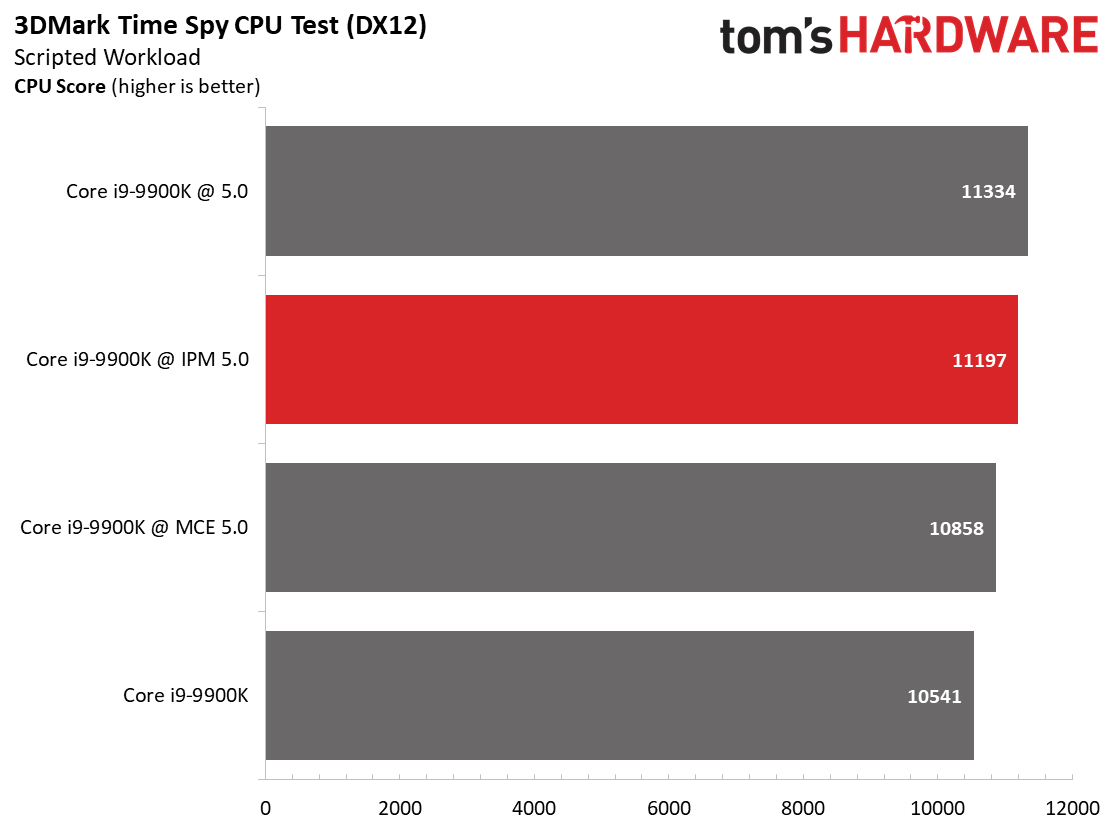
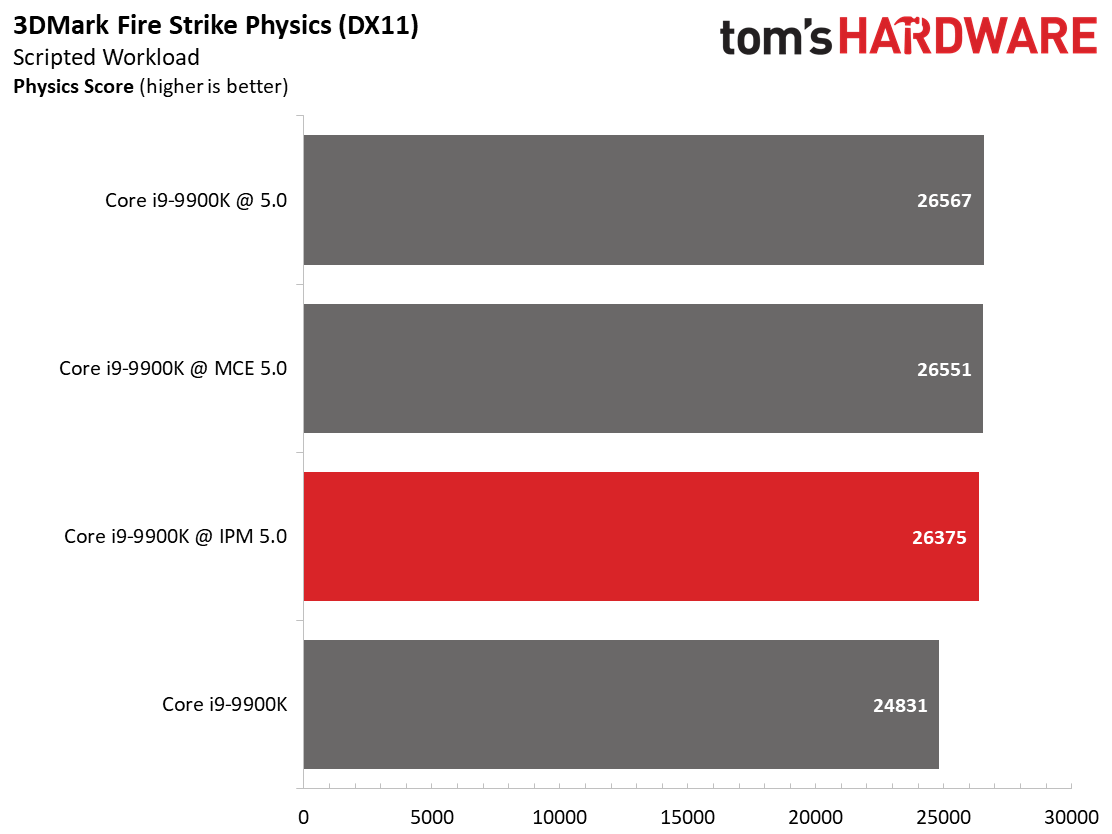
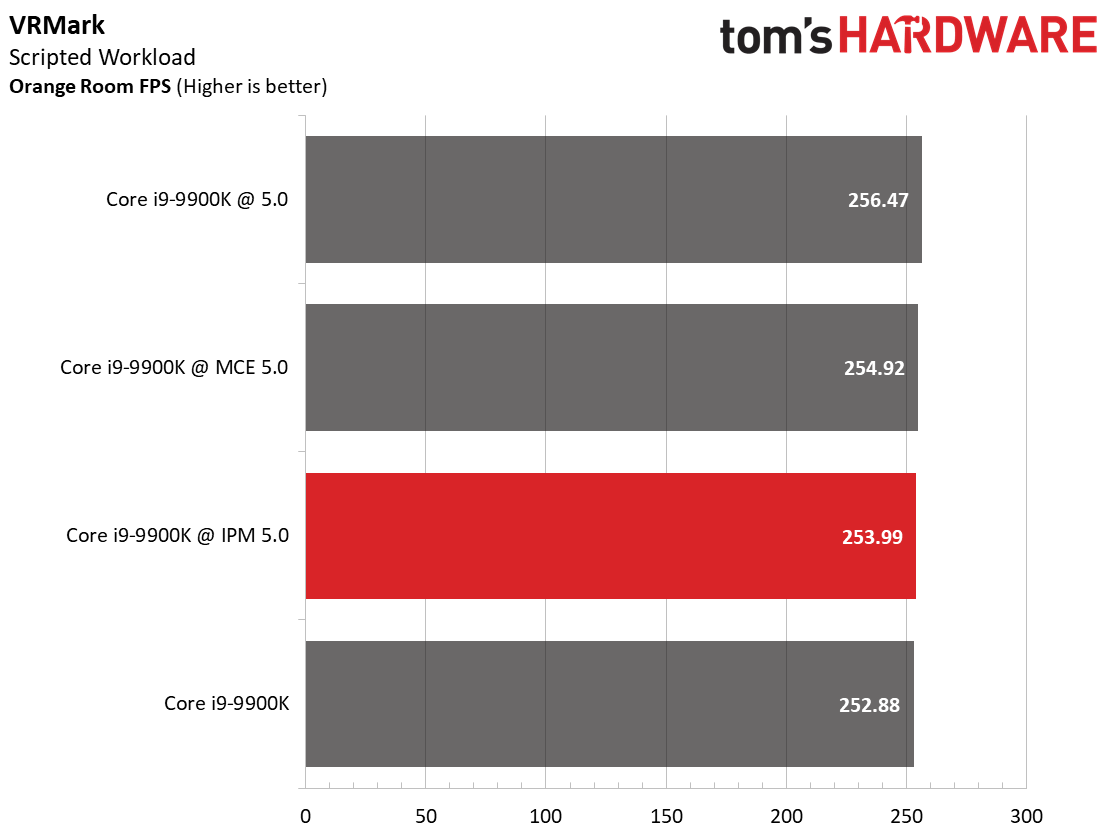
The IPM settings fall within 1.2% of our manually-tuned configuration in the DX12 CPU test and 0.72% in the DX11 physics test. That's within the noise of the benchmarks, which have a 3% expected variance, so the IPM configuration provided nearly the same performance as our painstakingly curated manual overclock.
The IPM configuration also fell within 1% of the manual overclock during the inherently lightly-threaded VRMark workload.
Ashes of the Singularity: Escalation
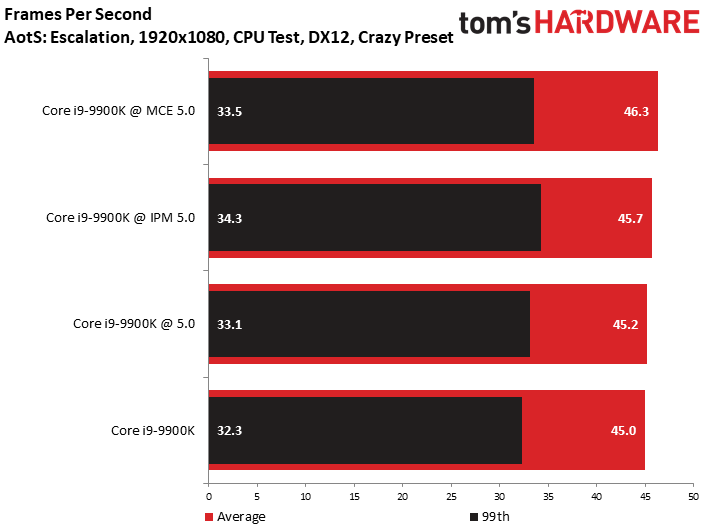
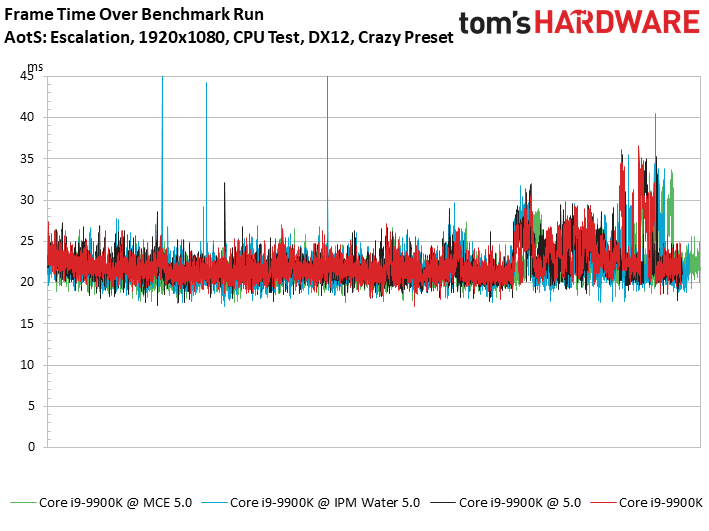
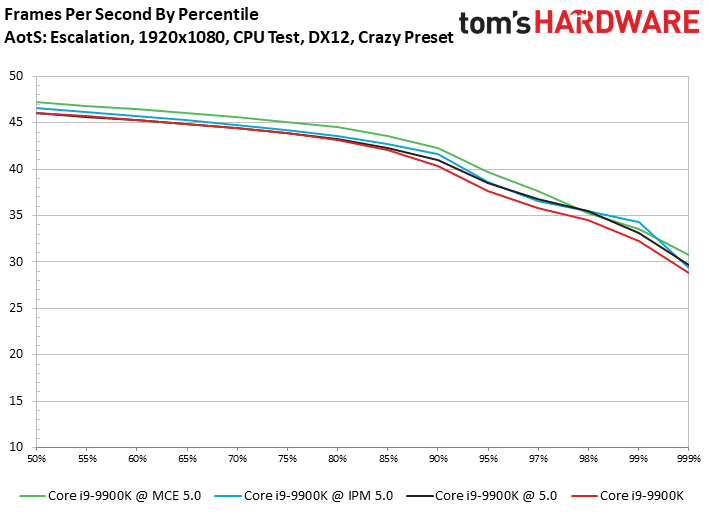
Ashes of the Singularity: Escalation is a computationally intense title that scales well with thread count. MSI's automatic MCE setting takes the lead, but we see little difference between our manually-tuned processor and the IPM-imposed overclock. In either case, we only see a maximum boost of ~3% over the stock configuration.
MORE: Best CPUs
MORE: Intel & AMD Processor Hierarchy
Get Tom's Hardware's best news and in-depth reviews, straight to your inbox.
MORE: All CPUs Content
Current page: VRMark, 3DMark and AotS: Escalation
Prev Page IPM vs. Precision Boost Overdrive and MCE, Test Setup Next Page Far Cry 5, GTA: V and Hitman
Paul Alcorn is the Editor-in-Chief for Tom's Hardware US. He also writes news and reviews on CPUs, storage, and enterprise hardware.
-
mdd1963 Here, take this Intel provided software, use it, it's great but....BUT,....if you use it, and overclock , and kill your processor, well, it was 'inherently dangerous'...your bad! :) (Better luck with your $500 next time!) :)Reply
Granted, Intel's XTU is not 'one click and done', but, I thought it would be hard to get too much easier (I think it took 5-6 clicks?)....
I see it's now easier.. :) -
AgentLozen Replyrgd1101 said:what the 1.5GB download get?
Hopefully the 100MB of overclocking software comes bundled with an installation of Warcraft III. That's about how much space its demanding. -
jimmysmitty Replyrgd1101 said:compare the power consumption and temp?
Yea that would be nice to see how it handles power and temps compared to MCE or manual overclocking.
I never have trusted auto OCing utilities, even in motherboards, as they tend to go on the high side of CPU voltage. -
King_V I wonder if this is smacking a little of desperation. These CPUs are already blowing past their TDP now that Intel has decided that base-speed TDP is more convenient for them that maximum power.Reply
Maybe they can't really claim a huge gaming lead anymore, and are trying to push through whatever boost they can, to try and keep an edge?
In this case, both in performance, and as a convenient space-heater. -
gdmaclew It's a useful utility, but it needs this, but it only supports that, but you have to remove this other thing. Typical for Intel.Reply -
joeblowsmynose Well I guess this free utility makes the 9900KS obsolete -- hasn't even launched yet! lol!Reply
Maybe they figured the suckers that would buy the insurance for the IPM would offset the markup on the 9900ks? Intel makes no sense at all ... literally none ... I can't wait for the 3900x to launch so I can give AMD more money. -
joeblowsmynose ReplyKing_V said:I wonder if this is smacking a little of desperation. These CPUs are already blowing past their TDP now that Intel has decided that base-speed TDP is more convenient for them that maximum power.
Maybe they can't really claim a huge gaming lead anymore, and are trying to push through whatever boost they can, to try and keep an edge?
In this case, both in performance, and as a convenient space-heater.
Massive power draws are only a major concern when AMD has it. When Intel has it, it just means cause its better. Don't you know the logic? ;)